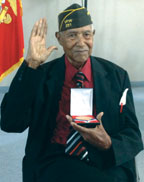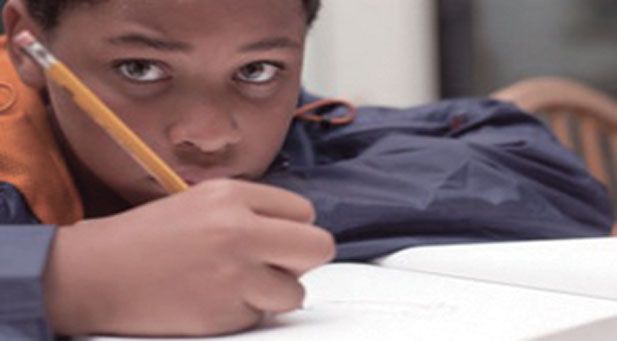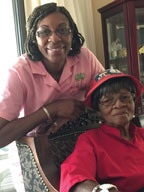
 At new museum, a Pop-Up Support System for Black Lives Matter
At new museum, a Pop-Up Support System for Black Lives Matter
Black Women Artists for Black Lives Matter participants arriving at the New Museum, on the Lower East Side of Manhattan, for Thursday night’s program. Credit Richard Perry/The New York Times
Simone Leigh said: “People were slow to recognize the work because of my insistence on the Black subject being a core of the work. I’m really happy that I have been able to have a career and stand my ground.” Credit Richard Perry/The New York Times
“Pedestals That Speak,” at the New Museum, bear the names and photos of Black women. Credit Richard Perry/The New York Times
By Tamara Best
In the New Museum’s lobby on Thursday night, a circle of women, all dressed in red, sway-ed from side to side, clapping as they chanted a simple call and response: “End the war on Black people,” followed by “It’s time.”
As the refrain continued, onlookers became participants.
The event, presented by Black Women Artists for Black Lives Matter, served as a balm at a time when the country is confronting painful questions about racial bias and police practices. The organizers said the aim was to provide a template for fellow artists looking for their own ways to respond and inspire others.
Mario Moore, who explained that he had attended out of curiosity, said he was struck by “the women in red singing a song.” He added, “There’s something about the presence of Black people in this static space that feels like a family reunion.”
In a roundabout way, the event was a sort of extension of Simone Leigh’s summer residency and exhibition, ”Simone Leigh: The Waiting Room,” at the museum. Her show, continuing through Sept. 18, explores and expands concepts of medicine and self-care.
Ms. Leigh’s exhibition draws
inspiration from apothecaries, among other entities promoting health. A reimagining of her 2014 project organized by Creative Time, “The Waiting Room” features ancillary programs called care sessions. Those include a guided meditation this Saturday, a nod to Ms. Leigh’s artistic mission of exploring Black subjectivity, with a focus on Black women.
“It’s always been taboo to announce my audience is Black women,” she said. “People were slow to recognize the work because of my insistence on the Black subject being a core of the work.
“I’m really happy that I have been able to have a career and stand my ground.”
Although Thursday’s program and Black Women Artists for Black Lives Matter are unrelated to “The Waiting Room,” Ms. Leigh called them “an appropriate next step” in initiating conversations about social justice.
“The creative energy of artists is very much alive in the movement,” said Frank Leon Roberts, who teaches a course titled Black Lives Matter: Race, Resistance and Populist Protest at New York University. “Anybody who has ever been to a protest rally knows that activism is a theatrical event. It takes choreography and staging.”
Among the special works on display at the museum on Thursday night was “Tamir Rice Photo Project,” from Shellyne Rodriguez’s archive, which showed photographs of 12-year-olds. The installation, intended to prompt visitors to remember their childhood selves, is also a commemoration for Tamir, 12, who was playing with a toy gun in 2014 when he was fatally shot by a Cleveland police officer.
The event had “a proactive spirit, and we intend on continuing this work in some iteration, so that it’s not reactive,” said Kameelah Janan Rasheed, an interdisciplinary artist who contributed to part of the installation “Pedestals That Speak,” featuring images, found at flea markets and estate sales, of Black women, among other things.
After the police shooting of Philando Castile, whose girlfriend broadcast the aftermath of his death on Facebook Live, Ms. Leigh took to Facebook. She posted a message in Bad News Women, a private group made up of black female artists, and suggested meeting to discuss police brutality and the response from visual artists. Ms. Leigh’s New Museum connection provided the physical space, and the initial gathering gave members a chance to exhale collectively.
“At least you knew you would be in a space with people who were your support system; there was some commiseration there,” the artist Nontsikelelo Mutiti said of the initial meetings. “Those moments were really key for me.”
The intent of the newly formed group is to foster a sharper discourse and cultivate strategies for the Black Lives Matter movement. (The proceeds from the sale of T-shirts on Thursday went to the movement.) Equally important for the group is highlighting the impact of the current situation with law enforcement on Black women facing violent interactions with police officers.
“It’s an issue that disproportionately impacts Black men and women,” Kimberlé Crenshaw, the founder and executive director of the African American Policy Forum, which created the #SayHerName movement to address the issue, said in a telephone interview. “We have enough space in our community to talk about both, so that all of these vulnerabilities come out of the agenda of this particular moment.”
At a time in which hashtags serve as inescapable reminders of civil rights battles not quite won, Thursday’s event was a reminder, Ms. Leigh said, that “everyone needs to do their part.”
“It’s an emergency now.”





Be the first to comment